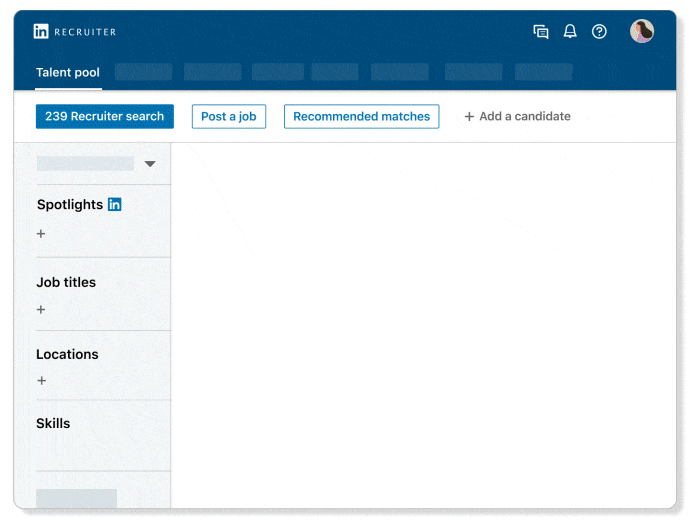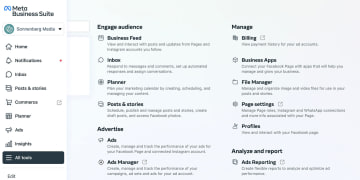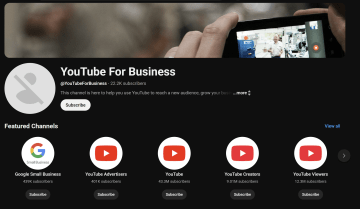Guides & best practices
View all articlesSocial media recruitment strategies

Finding top talent isn’t just about job boards anymore. The best candidates are scrolling, liking, and engaging on social media platforms – and that’s exactly where your recruitment efforts should be.
But some potential job candidates aren’t even actively looking, others might not take your company seriously if your social media presence is weak, and let’s be real – wading through hundreds of applications can be time-consuming.
So, how do you find and engage qualified candidates and make social media work for your hiring process? This guide covers how to use social media as a recruiting tool, the advantages and disadvantages, and the smartest social recruiting strategies to help you build the right team.
Pros and cons of using social media for recruitment
Benefits of using social media for recruitment
Hiring has changed. Instead of waiting for candidates to come to you, social media recruiting lets you take the search to them. It’s faster, more dynamic, and helps you connect with a wider pool of talent. Here’s why it works:
✅ Reaches both active and passive candidates: Not everyone is job hunting, but that doesn’t mean they wouldn’t be open to the right opportunity. Social media platforms help you connect with passive job seekers who aren’t actively applying but might be interested.
✅ Showcases your employer brand: Job seekers don’t just want a paycheck – they want a workplace they can connect with. A strong social media presence lets you highlight your company culture, values, and what makes your team unique.
✅ Faster and more cost-effective: Traditional job boards and recruitment software can be expensive. Posting on social media channels – or even using brand ambassadors and current employees to share openings – can significantly cut costs.
✅ Boosts engagement and visibility: A well-crafted job ad on platforms like LinkedIn, Instagram, or Facebook sparks conversations. More engagement means more qualified candidates seeing your post.
✅ Better targeting with advanced search filters: Unlike job boards that rely on applicants finding you, social media recruiting efforts let you find candidates using advanced search filters, hashtags, and direct outreach.
✅ Encourages referrals and networking: Employees and industry professionals can share your job postings, helping you reach a larger pool of potential candidates through social networks and professional relationships.
✅ Keeps recruitment efforts ongoing: Instead of starting from scratch every time you have a new job opening, building an active social media recruiting strategy keeps your talent pipeline full year-round.
Challenges of using social media recruitment
Here’s what to watch out for:
❌ Can be time-consuming: Managing multiple social media platforms, responding to messages, and sorting through potential job candidates takes effort. Without a streamlined approach, it can eat up valuable time.
❌ Risk of unconscious bias: Profiles often include photos, personal details, and social activity that aren’t relevant to the hiring process. This can lead to biased decision-making – whether intentional or not.
❌ Limited reach without paid promotion: Posting job listings on your social media pages is great, but algorithms don’t always work in your favor. Sometimes, boosting posts or using paid ads is the only way to ensure your job openings reach the right audience.
❌ Difficult to track recruitment success: Unlike traditional applicant tracking systems, measuring the impact of social recruiting efforts can be challenging. Without clear metrics, it’s hard to know if your strategy is working.
❌ Risk of negative employer branding: A poorly managed social media presence or negative reviews from current employees can deter potential candidates before they even consider applying.
How to develop a winning social media recruitment strategy
You need a clear plan, the right social media platforms, and consistent engagement to attract qualified candidates. Here’s how to make it work:
1. Leverage employer branding to attract top talent
Your employer brand is how job seekers perceive your company. It’s what makes people say, “I want to work there.” A strong social media presence helps you attract more qualified candidates, even those who aren’t actively job hunting.
Here’s how to use social media to build your employer brand:
Showcase company culture: Post behind-the-scenes content, team events, and employee stories to give potential candidates a glimpse of what it’s like to work with you.
Encourage employee advocacy: Current employees can be your best recruiters. When they share their experiences, it reaches passive job seekers who might not have applied otherwise.
Stay active and responsive: Post consistently and engage with comments, reviews, and questions. A company that interacts feels more approachable and transparent.
2. Create job posts that stand out and resonate with candidates
If your social media recruiting efforts only involve copying job descriptions from your careers page, you’re missing out on a huge opportunity. Candidates scroll fast – your job posts need to grab attention and make them stop.
Hook them in the first line: The first few words matter. Instead of “We’re hiring a Marketing Manager,” try “Love digital marketing? Join a team that actually values creativity.” Lead with something that speaks to the candidate’s aspirations.
Use compelling visuals: Posts with images, graphics, or videos get higher engagement than plain text. Share team photos, behind-the-scenes office shots, or even a short “day in the life” video. People want to see where they’ll be working.
Make it about them, not just you: Most job ads list company demands. Flip the script – highlight career growth, work-life balance, or perks that make the role exciting.
Keep it scannable: Avoid large blocks of text. Use bullet points, bolded key phrases, and even emojis (where appropriate) to keep it easy to read at a glance.
Optimize for the platform: A LinkedIn job post can be more professional and detailed, while an Instagram or TikTok post should be visual and straight to the point.
Encourage interaction: Ask a question or add a CTA like “Know someone perfect for this role? Tag them!” This boosts engagement and increases your post’s reach.
3. Utilize employee advocacy to expand your reach
Your employees are your best brand ambassadors. When they share job openings, company updates, or personal experiences, it reaches a broader and more trusted audience than a company post ever could.
Encourage your team to share job opportunities on their social media networks and talk about their experiences working at your company. This boosts your employer brand and helps attract passive candidates who might not be actively job hunting but trust recommendations from their network.
Make it easy for employees to participate by providing pre-written job post templates, engaging content about the company, and incentives for referrals. Recognizing and rewarding their efforts can further encourage them to take part in your social recruiting efforts. The more your employees advocate for your company, the bigger your hiring reach becomes.
4. Engage with passive candidates through targeted outreach
Passive candidates – those who aren’t looking but would be open to the right opportunity – make up a huge part of the talent pool. The challenge? They won’t apply on their own. You need to reach them where they are.
Use LinkedIn’s advanced search filters: LinkedIn is the go-to platform for finding potential job candidates who aren’t actively applying. Use filters to search by job title, skills, and location, then send personalized connection requests or direct messages to start a conversation.
Leverage Facebook and Instagram ads: Running targeted job ads on social media platforms lets you reach professionals who fit your ideal candidate profile, even if they aren’t browsing job boards. Use detailed targeting to refine your audience based on industry, job title, and interests.
Engage in industry groups and communities: Many professionals network in LinkedIn groups, Facebook communities, or Slack channels related to their field. Join these spaces and participate in discussions rather than just posting job ads. Building professional relationships makes outreach more effective.
Boost your employer brand to attract them organically: A strong social media presence showcasing your company culture, employee stories, and career growth opportunities can make passive candidates curious enough to reach out.
5. Incorporate video content and live sessions for recruitment marketing
Static job posts can only do so much. Video content and live sessions bring your social recruiting efforts to life by making your company feel more personal and engaging. Candidates get a real glimpse of your work environment, culture, and team dynamics – something a job description alone can’t convey.
LinkedIn and Instagram Stories/Reels: Share quick, behind-the-scenes clips of your office and team culture. These short-form videos boost engagement and make your brand more relatable.
Facebook and LinkedIn Live: Host Q&A sessions, company tours, or panel discussions with current employees to answer job seekers’ questions in real time. Live sessions create direct interaction, making it easier to connect with potential candidates.
YouTube for long-form content: If you want to go deeper, post employee testimonials, leadership talks, or recruitment tips on YouTube. This platform works well for evergreen content that can be shared across different social media channels.
TikTok for creative job marketing: If your industry caters to younger talent, TikTok is a great place to post quick, engaging job highlights, company perks, or behind-the-scenes team moments in a fun, authentic way.
💡Tip: Use video to answer common hiring questions, introduce hiring managers, and showcase company culture. The more personal and transparent your content, the more likely candidates will feel connected and excited to apply.
Best social media platforms for recruitment
You’re probably already aware of the relevant social media platforms in today’s digital climate. But of these popular sites, which ones are best for recruiting potential candidates? And more importantly, which sites will best suit your company’s needs?
Here is a breakdown of each, detailing why a company may or may not benefit from advertising on the platform.
1. LinkedIn

We start with LinkedIn, currently the most widely used social media platform for filling job openings. LinkedIn took the social media model of connecting friends and family and moved it in an entirely different direction. LinkedIn is where business professionals can network, connect with companies, search job listings, and more.
Consider using LinkedIn to recruit if you’re trying to connect with candidates who are business-oriented and generally looking for career opportunities.
2. Facebook

Facebook, one of the first social media platforms that grew exponentially, has some distinct factors that make it a good option. First, in comparison to LinkedIn and other business-heavy platforms, Facebook is more laid back, removing some of the barriers that might otherwise prevent honest communication between companies and candidates.
Also, recruiting on Facebook is made easier with the power to prioritize advertisements based on the demographics you’re searching for. Facebook allows job openings to be posted directly on the platform.
3. Instagram

Instagram, as you know, is an image-based social media site, and it provides companies with a unique chance to connect with users and show off their company’s creative side. Demonstrate your company’s ideals, goals, and overall brand message. Instagram is generally used by a younger demographic, but as is always the case, over time, demographics shift.
4. TikTok

TikTok creates social connections through short videos that share a brief story or life event. The demographic for TikTok is generally younger than Instagram and its other social media counterparts.
TikTok provides a way for users to engage with companies using the ‘Resume’ feature, and helps companies find potential candidates through videos and other unique tools and features.
💡Tip: Just because some social media platforms are currently more popular than others for recruiting, doesn’t mean you should neglect less-popular platforms.
It’s hard to predict trends, but one trend that holds true is that times change, demographics change, and the internet landscape changes. What is the most popular recruitment site today could be playing second fiddle tomorrow.
5. YouTube

Though we might not necessarily see YouTube the same as we do other social media platforms, it still qualifies as one, and is a great platform for recruitment activities. A company YouTube page helps funnel new people to your website and promote your brand, and helps you connect with potential job candidates – particularly if your industry relates to media.
Boost your social media recruiting efforts with Heyflow
Social media recruiting opens the door to a wider, more engaged talent pool, but success depends on strategy. Strong employer branding, interactive job posts, employee advocacy, and targeted outreach can turn social media into a powerful recruitment tool.
But long, outdated application forms cause drop-offs, and job ads get lost in crowded feeds. That’s where Heyflow changes the game.
With Heyflow’s no-code platform, you can build interactive recruitment funnels and landing pages that engage candidates instantly. Instead of sending job seekers to generic career pages, Heyflow lets you pre-qualify applicants, simplify application processes, and reduce hiring costs – all without writing a single line of code.
-------------
Turn social media traffic into qualified job applicants
Connect Heyflow with your favorite HR tools, track applications in real time, and automate candidate screening – all without writing a single line of code.



